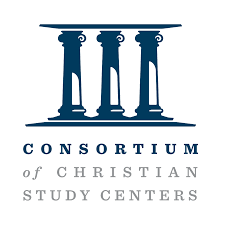The other day I had to describe Christian Study Centers briefly to an audience of Anglican theological educators. Here’s what I said.
Feel free to comment on what I missed or got wrong. It’s a wild and wonderful movement with many different flavors of centers! And some centers are actually trying to figure out whether they should even use the term “Christian study center,” as it does not necessarily capture fully or represent accurately what they are doing.
What are Christian study centers? They are a Protestant subset of a larger species that Perry Glanzer has called “Centers for Christian Thought,” which include both Catholic and Protestant varieties. The first Protestant Christian study centers appeared in the 1970s, planted on or near the campuses of secular state and private universities.
As a category they are somewhere between university-administered academic centers and parachurch campus ministries, sharing the academic emphasis of the former and the faith emphasis of the latter. They are independently run and funded, and they serve pluralistic universities in ways that have been called “para-academic.”
Unlike such traditional campus ministries as Cru and Intervarsity, which emphasize spiritual growth, community building, and pastoral care, Christian Study Centers provide visiting speakers, study spaces with coffee and small libraries, and especially reading groups, seminars, and other academic programs designed to help undergraduates, graduate students, and professors attain faith/learning and faith/vocation integration in light of the Christian intellectual tradition.
Some of the better-known Christian Study Centers are the Center for Christian Study at UVA, Chesterton House at Cornell, Upper House at the University of Wisconsin—Madison, the North Carolina Study Center at UNC—Chapel Hill, and Anselm House at the University of Minnesota.
For more on Christian Study Centers, see the Consortium of Christian Study Centers website, here. The consortium currently has an aggressive growth goal of planting 100 new centers in the next decade!
For Glanzer (and co-authors) on the broader category of “Centers for Christian Thought,” see the chapter on study centers in this book. That’s as good a short introduction as is available these days.




Thanks for this quick descriptor, Chris. One of the interesting bits here in the Triangle area of North Carolina has been the shared vision between InterVarsity's Graduate & Faculty Ministries and the local Study Centers. Unlike your general description of InterVarsity at an undergrad ministry level, the grad/faculty ministries share some of the same vision for Christian scholarship, Christian pedagogy, and Christian intellectual formation of students. The developement of the study centers (I helped start the one at Duke where I've served as IV's GFM Staff for years, even your years here) has exponentially increased the resources given to the academic formation piece of the mission. It does seem that IV hold oneo to factors that serve the mission of the centers. One is the creation of communities and not just programs. These are formational communities both spiritually and intellectually. The other is the concern for witness beyond the Christian communities. Demonstrating the hope of the gospel and inviting the non-believing members of the academy to consider the claims of Christ seems at times missing the the study center model but remain in the parachurch. These lines get blurred, wonderfully so. If I had imagined a faculty and grad ministry at Duke that would be thrilling and transformative, I would have been delighted by what now exists here, something that could not have happened without the parachurch AND study center contirbutions. At leasst at Duke and UNC, the intellectual mission is a shared mission.